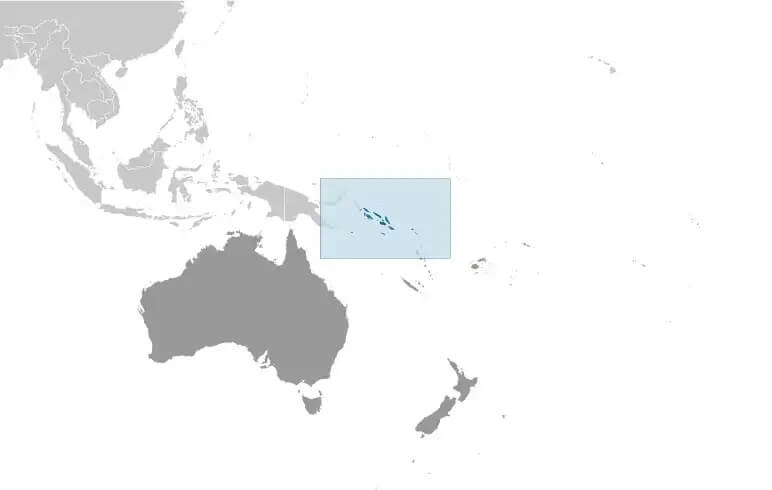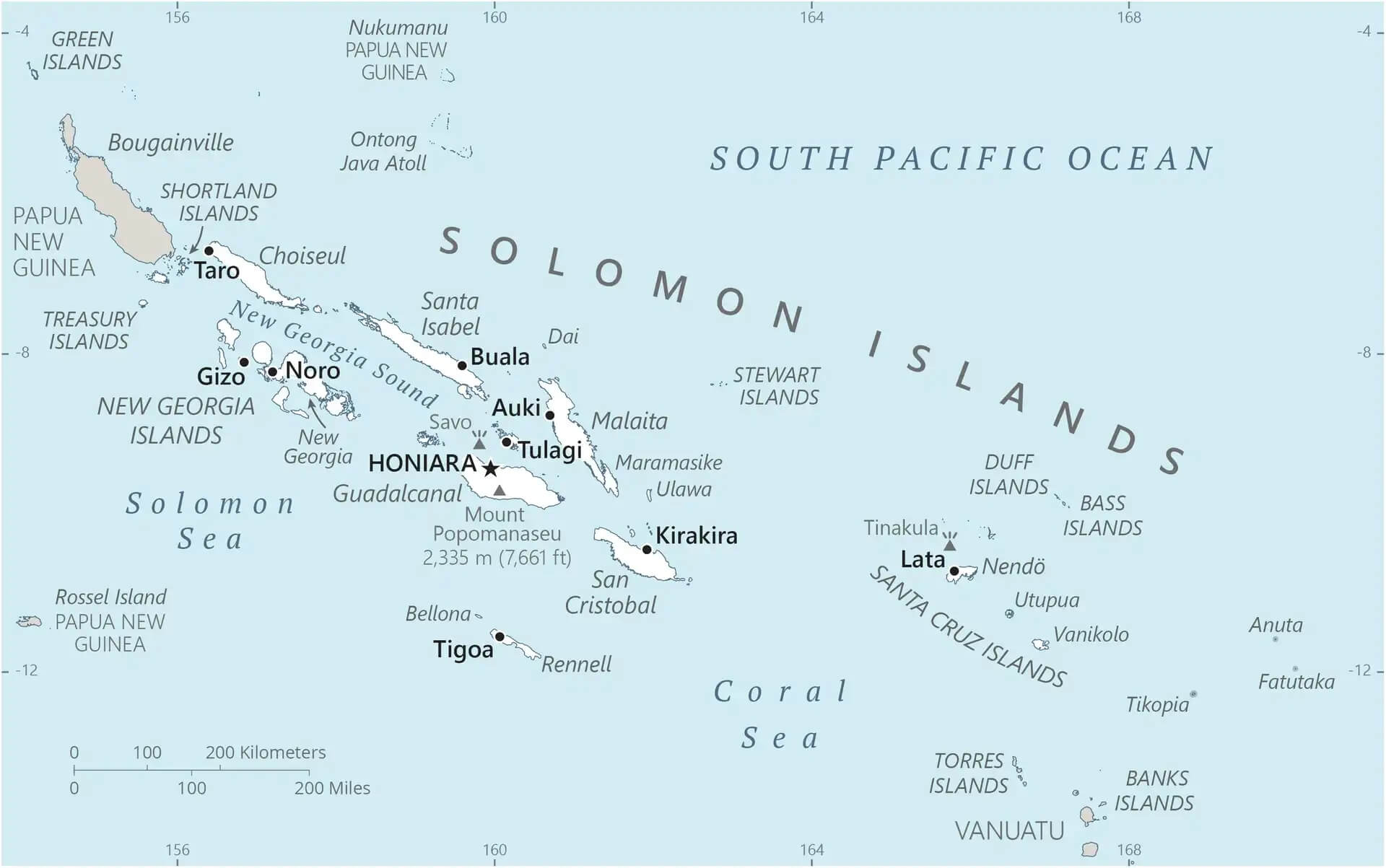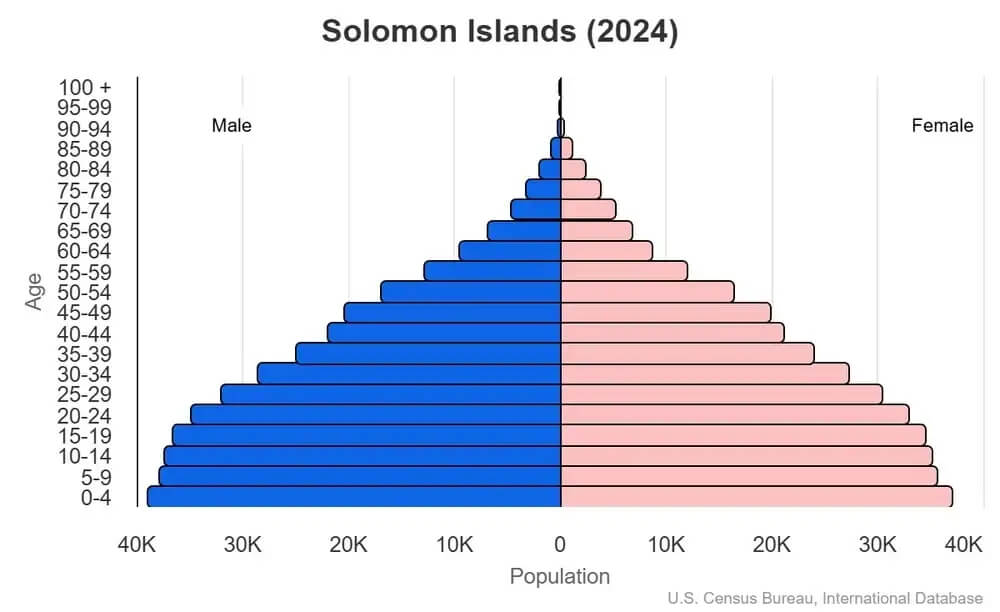World Book
Solomon Islands
Introduction
Background
The UK established a protectorate over the Solomon Islands in the 1890s. Self-government came in 1976 and independence in 1978. Ethnic violence, government malfeasance, endemic crime, and other issues undermined stability. From 2003 to 2017, the Australian-led Regional Assistance Mission to the Solomon Islands helped restore law and order and rebuild government institutions, although political tensions have continued.
Geography
Area
total : 28,896 sq km
land: 27,986 sq km
water: 910 sq km
Climate
tropical monsoon; few temperature and weather extremes
Natural resources
fish, forests, gold, bauxite, phosphates, lead, zinc, nickel
People and Society
Population
total: 726,799 (2024 est.)
Ethnic groups
Melanesian 95.3%, Polynesian 3.1%, Micronesian 1.2%, other 0.3% (2009 est.)
Languages
Melanesian pidgin (lingua franca in much of the country), English (official but spoken by only 1%-2% of the population), 120 indigenous languages
Religions
Protestant 73.4% (Church of Melanesia 31.9%, South Sea Evangelical 17.1%, Seventh Day Adventist 11.7%, United Church 10.1%, Christian Fellowship Church 2.5%), Roman Catholic 19.6%, other Christian 2.9%, other 4%, unspecified 0.1% (2009 est.)
Population growth rate
1.65% (2024 est.)
Government
Government type
parliamentary democracy under a constitutional monarchy; a Commonwealth realm
Capital
name: Honiara
Executive branch
chief of state: King CHARLES III (since 8 September 2022); represented by Governor General David Tiva KAPU (since 7 July 2024)
head of government: Prime Minister Jeremiah MANELE (since 2 May 2024)
Diplomatic representation in the US
chief of mission: Ambassador Jane Mugafalu Kabui WAETARA (since 16 September 2022); note - also Permanent Representative to the UN
Diplomatic representation from the US
chief of mission: Ambassador Ann Marie YASTISHOCK (since 14 March 2024); note - also accredited to the Papua New Guinea and Vanuatu, based in Port Moresby, Papua New Guinea
Economy
Economic overview
lower middle-income Pacific island economy; natural resource rich but environmentally fragile; key agrarian sector; growing Chinese economic relationship; infrastructure damage due to social unrest; metal mining operations
Real GDP (purchasing power parity)
$2.07 billion (2024 est.)
$2.019 billion (2023 est.)
$1.967 billion (2022 est.)
Real GDP per capita
$2,500 (2024 est.)
$2,500 (2023 est.)
$2,500 (2022 est.)
Exports
$642.877 million (2024 est.)
$546.025 million (2023 est.)
$411.359 million (2022 est.)
Exports - partners
China 56%, Australia 11%, Italy 10%, Spain 5%, Netherlands 4% (2023)
Exports - commodities
wood, fish, gold, precious metal ore, palm oil (2023)
Imports
$857.128 million (2024 est.)
$883.611 million (2023 est.)
$764.641 million (2022 est.)
Imports - partners
China 42%, Singapore 13%, Australia 13%, Taiwan 5%, Malaysia 5% (2023)
Imports - commodities
refined petroleum, plastic products, fish, broadcasting equipment, iron structures (2023)
Human Development Index
The country's Human Development Index (HDI) is 0.584, ranking it 156th out of 193 countries tested. (more information)



